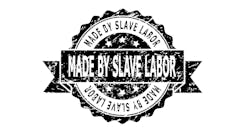COMMENTARY
A persisting political argument used to support all sorts of policy changes is that American women earn 82 cents for every dollar a man earns. On March 24, you may have noticed the national news media and feminist advocates trumpeted “Equal Pay Day,” the day each year when women’s pay is believed to finally catch up to that of their male co-workers.
But is that 82-cent pay gap calculation true?
Robin Shea, a partner in the law firm of Constangy Brooks Smith & Prophete, has serious doubts about it, as do others who have studied the issue in depth, without application if ideological blinders. As Shea points out, the accuracy of the 82 cents figure depends entirely on the assumptions you start with.
PayScale, a compensation management software and data services company, studied the matter by distinguishing between an uncontrolled pay gap and a controlled pay gap. Uncontrolled is used in the statistical sense and results in the 82 cents number you hear about all the time.
It compares the average pay of all women in the workforce with the average pay of all men in the workforce. That’s it. In 2020, all women averaged about 82 cents for every dollar that all men averaged. This gap is called uncontrolled because it fails to control for any other factors that might affect the differing levels of pay except for gender.
According to Shea, the controlled gap is the more meaningful one. “There is still a gender pay gap when using the controlled numbers, but it is dramatically smaller than the uncontrolled gap. When you control for the other factors that could affect pay, women make about 98 cents for every dollar that men make.”
What factors does this analysis control for?
• The kind of position held (for example, CEO versus receptionist).
• Industry (for example, heavy manufacturing versus restaurant and hospitality versus health care versus teaching in K-12 schools).
• Full-time versus part-time.
• The number and duration of career interruptions.
• The number of years in the workforce.
Other factors examined include the person’s educational background and geographical location (urban versus rural, Mississippi versus California). “All of these affect a person's pay,” Shea notes.
These observations have not gone unchallenged, but the objections are only persuasive if, for example, you are ideologically inclined to believe that it is sexist for women to suffer pay differential based on taking time off to have and raise children, which may necessitate taking part-time rather than full-time jobs.
Isn’t that sexist because it is less likely to impact men? “That depends on your values,” Shea says. “If family is important to you, then it may be a privilege rather than an injustice. If career advancement is your priority, then maybe it's an injustice. Either way, it’s not your employer's fault.”
In the end, the uncontrolled 82-cents wage gap number is a poor foundation for making policy, she holds. “I believe the government’s statistics that, when you compare all women to all men with no other controls, women make 82 cents for every dollar men make. But we should not be focused on this ‘uncontrolled’ group, where there could be a million explanations for the gap that have nothing to do with unlawful discrimination.”
On the other hand, she believes that the two-cent gap resulting after applying statistical controls, while much less significant as the 18-cent gap, still needs to be addressed.
“Is that due to discrimination? Could be, if all the other explanations have been ruled out. But a two-cent gap will be a lot easier to fix than an 18-cent gap. And the initiatives taken by some states (for example, banning questions about salary history) and some advocacy groups and career coaches (for example, encouraging women to negotiate over their pay) may go a long way toward closing this small, still-unexplained gap.”
Uncontrolled Legislation
If you are an employer operating in California, New York and several other states, you are already familiar with the approach taken by Democrats with the Paycheck Fairness Act (PFA), currently under consideration by the House of Representatives. If enacted, that law would ban employer restrictions on discussions of wage information and would not allow employers to use a job applicant’s salary history to set their starting pay. (This also applies to racial and ethnic minorities as well as female workers.)
Congress previously attempted to address this issue in the Equal Pay Act of 1963 (EPA), which prohibits employers from discriminating against workers on the basis of sex in terms of wages.
That law recognizes four affirmative defenses for employers who charge different rates of pay to men and women. Included are seniority and merit-based systems of compensation, and systems that determine earnings by quantity or quality of production.
The fourth is an umbrella defense that allows a pay differential if it is based on any other factor than sex. “If passed, the PFA would significantly narrow this key defense and require employers to demonstrate that the wage differential is a matter of business necessity,” notes attorney Christa Richer Cook of the Bond Schoeneck & King law firm.
The bill puts the weight on employers to show that the factor underlying a pay differential is not based upon or derived from a sex-based differential in compensation; is job-related and consistent with business necessity; and accounts for the entire differential in the compensation amount at issue.
Also concerning is that the legislation would create an opening for class action lawsuits based on the EPA and would impose punitive damages for the first time. It also will change Office of Federal Contract Compliance Programs (OFCCP) methodology in identifying pay discrimination, directly impacting businesses that are federal contractors and subcontractors.
Currently, wage comparisons used to ascertain discriminatory differentials must be made within a single “establishment,” which at this point is defined as the same physical place of business. Under the PFA, that would expand to include employees working in the same county or similar subdivision of a state. This would significantly increase litigation risk for employers since employees could compare their wages against those of other workers based on geographical factors alone, point out attorneys with the firm of Hall Benefits Law.
More than a dozen states have adopted pay equity laws in recent years, with the toughest being in California, New York and most recently Colorado. Other states with similar statutes are Maryland, Illinois, New Jersey and Washington. In fact, employers in many states already deal with pay equity comparisons no longer contained within a single location or facility, but that can take place not just in a county, but across an entire state.
The clear trend at the state level—perhaps to be replicated at the federal level—is to allow potential plaintiffs to look across wider swaths of a company to allege pay disparities, note attorneys Matthew Gagnon and Benjamin Han of the Seyfarth Shaw law firm.
In the wake of these legislative measures at the state level, employers need to take action to protect themselves, Cook says. Pay equity claims often result from a failure of employers to have a standard process in establishing and evaluating pay, she observes. Given the significant potential liability, Cook advises employers to conduct privileged (meaning conducted by attorneys) pay equity audits to identify and resolve gender and race-based compensation disparities.




